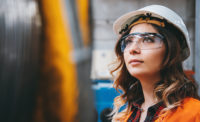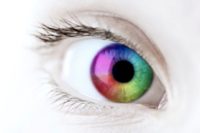 Eye protection noncompliance is a big, big problem, according to the results of a recent survey conducted by Kimberly-Clark Professional.
Eye protection noncompliance is a big, big problem, according to the results of a recent survey conducted by Kimberly-Clark Professional.
The PPE manufacturer queried 138 workers in manufacturing industries across the U.S., Canada and Mexico and found that 85 percent had observed others failing to wear eye protection when they should have been.
Eighty percent said they would encourage a co-worker or employee to wear eye protection if he or she were not in compliance, and 22 percent said they would report the employee to a supervisor or find a way to halt dangerous work operations until the worker complied with personal protective equipment (PPE) protocols.
"This high rate of noncompliance seriously jeopardizes worker health and safety. In many instances uncomfortable eyewear or fogged lenses could be responsible," said Valona Renner-Thomas, Product Manager, Eye and Face Protection, Kimberly-Clark Professional. "The results are very disconcerting when you consider that 90 percent of eye injuries can be prevented through the use of proper protective eyewear. Enhancing eyewear practices is critical to creating Exceptional Workplaces—those that are safe, healthy and productive for all employees."
OSHA requires employers to provide eye and face protection to guard against chemical, environmental, radiological or mechanical irritants or hazards. Yet, data from the Bureau of Labor Statistics show that nearly three out of five injured workers were not wearing eye protection at the time of the accident or were wearing the wrong kind of eye protection for the job.
The survey revealed an interesting paradox: respondents ranked PPE the most important on-the-job safety category, but they also identified it as the most challenging category in terms of compliance.
When asked what would most improve compliance with eye protection protocols, the top choice was comfort -- with features like flexible, comfortable nose pieces (56 percent) followed by fog-free lenses (22 percent).
Fifty-one percent of respondents also reported having been forced to wear uncomfortable eyewear or eyewear they did not like while at work. Of these, 46 percent wound up purchasing their own eye protection, while 45 percent said they "used it anyway."
Fogging was also a problem on the job, with 88 percent of respondents saying they or someone they worked with had been unable to see or complete a task properly because of fogged lenses. Forty percent of respondents said this had happened on "numerous occasions."
Only a quarter of respondents said their organizations encouraged employees to take protective eyewear home, even though 84 percent of respondents said they would consider using eye protection from work as their everyday sunglasses if it was comfortable, fit well and offered UV protection.
The survey also asked about eyewear aesthetics and branding. When it comes to style, wraparound frame designs were the top choice, selected by 77 percent of respondents. When asked if they believed brand-name products were better than less-expensive copycat or knock-off items, 71 percent answered yes.
All survey participants said they were responsible for purchasing or influencing the purchase of protective eyewear or wore these products on the job. Respondents worked in manufacturing, engineering, product design or R&D, with supervisors or shop stewards comprising 11 percent, and safety managers or industrial hygienists making up nine percent. (The remainder held other positions.)
Kimberly-Clark Professional partners with businesses to create Exceptional Workplaces for their employees and patrons, with brands like Kleenex, Scott, WypAll, Kimtech, and Jackson Safety.






